What's New
Displaying results 3651 - 3660 of 4922
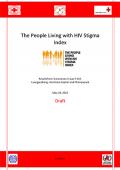
Resource | Publications,
In this report, we present the results of the People Living with HIV (PLHIV) Stigma Index Survey conducted in Lao P.D.R. from October 2011-February 2012. Through these results, we aim to shed light on the HIV-related stigma and discrimination situation in the country, contribute to the exploration of the large biosocial mechanisms that affect stigma and the epidemic, and propose comprehensive interventions to battle HIV-related stigma and discrimination.

Resource | Publications,
The Global AIDS Response Progress Report (GARPR) 2012 of Singapore covers the period of January 2010-December 2011 and submitted on 3 May 2012. Singapore’s HIV epidemic is classified as a low-level epidemic.

Resource | Publications,
Sri Lanka: National AIDS Spending Assessment 2009-2010 examines the flow of resources intended to combat HIV/AIDS. It tracks the allocation of funds, from their origin down to the end point of service delivery, among the different institutions dedicated in the fight against the disease using the bottom-up and top-down approach. Financial resources are tracked by financing source whether it is public, private or international, and among the different providers. Total HIV/AIDS expenditure in Sri Lanka during 2010 is estimated at Rs.534 million (USD 4.7 million), which is equivalent to 0.010% of GDP. Central government was the largest financing source, contributing 48% followed by donor agencies at 40% and International non-profit institutions contributing 3%.
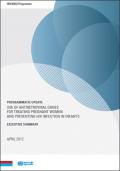
Resource | Publications,
Recent developments suggest that substantial clinical and programmatic advantages can come from adopting a single, universal regimen both to treat HIV-infected pregnant women and to prevent mother-to-child transmission of HIV. This streamlining should maximize PMTCT programme performance through better alignment and linkages with antiretroviral therapy (ART) programmes at every level of service delivery. One of WHO’s two currently recommended PMTCT antiretroviral (ARV) programme options, Option B, takes this unified approach.
Now a new, third option (Option B+) proposes further evolution—not only providing the same triple ARV drugs to all HIV-infected pregnant women beginning in the antenatal clinic setting but also continuing this therapy for all of these women for life.
This programmatic update is meant to provide a current perspective for countries on the important changes and new considerations arising since publication of WHO’s PMTCT ARV guidelines, 2010 version, especially as a number of countries are now preparing to adopt Option B+. WHO has begun a comprehensive revision of all ARV guidelines, including guidance on ARVs for pregnant women, planned for release in early 2013.
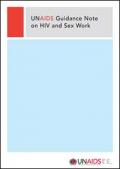
Resource | Publications,
This Guidance Note has been developed to provide the UNAIDS Cosponsors and Secretariat with a coordinated human-rights-based approach to promoting universal access2 to HIV prevention, treatment, care and support in the context of adult sex work. In a world where the overwhelming majority of HIV infections are sexually transmitted, sex workers and their clients are at heightened risk of HIV, in large measure as a result of a larger number of sex partners. Vulnerability to HIV as a result of sex work extends to women, men, and transgender people.
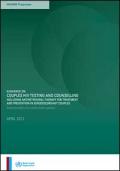
Resource | Guidelines,
These guidelines recommend increasing the offering of HIV testing and counselling (HTC) to couples and partners, with support for mutual disclosure. They also recommend offering antiretroviral therapy (ART) for HIV prevention in serodiscordant couples.
There are many potential benefits to supporting couples to test together for HIV infection and to mutually disclose their HIV status—most importantly, that together they can then make informed decisions about HIV prevention and reproductive health, including contraception and conception. These benefits are relevant for all couples, whether they have the same HIV test results (HIV seroconcordant) or have different results (HIV serodiscordant). The findings of many published studies suggest that people who learn their HIV status are more likely to adopt preventive behaviours than people who are unaware of their HIV status.
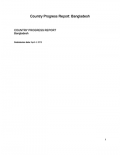
Resource | Publications,
The National AIDS/STD Programme (NASP) of the Ministry of Health and Family Welfare, Government of Bangladesh, played the role of the main coordinating body through taking leadership in the process of preparing the Global AIDS Response Progress Report, 2012, Bangladesh.
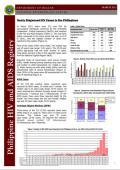
Resource | Fact Sheets,
In March 2012, there were 313 new HIV Ab seropositive individuals confirmed by the STD/AIDS Cooperative Central Laboratory (SACCL) and reported to the HIV and AIDS Registry (Table 1). This was 82% higher compared to the same period last year (n=172 in 2011), and the highest number of cases ever reported in the registry [Figure 1].
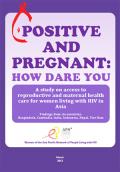
Resource | Publications,
This study on positive women's access to reproductive and maternal health care and services was conducted in six South and South East Asian countries: Bangladesh, Cambodia, India, Indonesia, Nepal and Viet Nam. Countries were selected to include a mix of low and concentrated epidemics and coverage of services that support women to have HIV free babies (usually referred to as prevention of mother to child transmission or PMTCT). The objective of the study is to examine the experience of access to reproductive and maternal health care and services by HIV positive women who have been pregnant in the past 18 months.
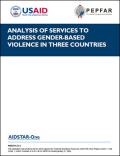
Resource | Publications,
A core principle of the PEPFAR II strategy is to support the long-term sustainability of HIV-related prevention, treatment, care, and support programs and to scale up promising and innovative programs and practices. Breaking the links between HIV infection and GBV requires targeted interventions to foster changes in individual and community norms that perpetuate violence against women and other vulnerable groups.
These case studies were developed to help program managers design, plan, and implement strategies to integrate gender-based violence within existing HIV, family planning, or reproductive health services and programs. Analysis of the studies—conducted in Vietnam, Ecuador, and Swaziland—yielded five major findings and eight overarching recommendations.





